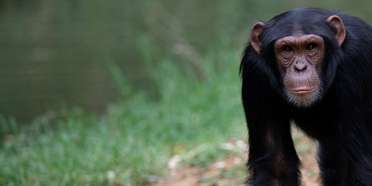- You are here:
- Home
- Countries & Parks
- Rwanda Parks
- Gishwati-Mukura National Park
- Reviews
- Expert Reviews
Expert Reviews – Gishwati-Mukura NP

Charlotte lives in Uganda and is a writer, blogger, volunteer and promoter of birding, conservation and responsible tourism. She writes for Fodor’s, Horizon Guides and Bradt, and runs an award-winning blog.
1 person found this review helpful.
One To Watch
In a world in which even the protected areas are under threat, it's always reassuring to hear of somewhere that's bucking the trend: Rwanda's fourth national park pieces back together two severely neglected patches of land, which were ironically once Rwanda’s biggest forests. If my first visit to the impressive new national park headquarters is anything to go by, Gishwati-Mukura will quickly regenerate to offer a good range of forest- and community-based tourism activities, including chimp tracking (although the great ape population is small and doesn’t compare to Ugandan forests, for example).
For now, the new tarmac roads are only used by the occasional push bike and women laden with sugarcane (and obligatory baby on the back). Terraced hills of tea plantations make for stunning vistas. Head to Wilderness Safaris’ (small) guesthouse and campsite and the recovery plan all makes sense: perched high on a hilltop, ancient rainforest stretches below you as far as the eye can see. I may only have had a tantalising glimpse of the tropical rainforest but it stirred me enough to choose it as my SafariBookings profile picture.

Philip is an acclaimed travel writer and author of many guidebooks, including the Bradt guides to Uganda, Tanzania, Kenya and South Africa.
1 person found this review helpful.
Rwanda’s Phoenix Forest
Gazetted in 2016, Gishwati-Mukura is not only the newest national park in Rwanda, but also by far the smallest and the most affected by human encroachment. Despite this, the very existence of the park represents an exciting development in Rwandan conservation and ecotourism, as it was motivated in large part by a local community organization. Established in 2005 and now aptly entitled Forest of Hope, this dynamic NGO recognized that the destruction of the once-vast Gishwati Forest had increased soil erosion, lowered water quality and caused several fatal landslides, and so it set about protecting what forest remained, as well as reafforesting buffer areas. As one measure of Forest of Hope’s success, the local chimp population has increased from 13 in 2008 to 35 today.
I was personally excited to visit this park, as it felt like a classic case of unfinished business. Many years ago, whilst researching the third edition of the Bradt Guide to Rwanda, I went on a wild-goose chase in search of the last rumored relict of Gishwati Forest, and concluded it had probably been chopped down. So it felt really special to stay at the modest guesthouse run by Forest of Hope (in collaboration with Wilderness Safaris) and admire the stunning view over Gishwati-Mukura’s layered forested hills, with Karisimbi, the tallest of the Virunga volcanoes, rising to 4,507m/14,787ft in the background.
We were taken on a guided forest walk and were fortunate to have decent sightings of all three of the park’s diurnal primates: chimpanzee, golden monkey and l’Hoest’s monkey. Chimps and golden monkeys are in the process of being habituated in Gishwati, so while they're still quite shy, this is bound to improve over the course of time. We also saw some excellent birds, including black-billed turaco, grey cuckoo-shrike, blue-headed sunbird, regal sunbird and least honeyguide.

Ariadne is a renowned African wildlife photographer whose work is featured in many well-known guidebooks and magazines.
Chimp Habituation
Gishwati-Mukura is Rwanda’s newest national park. Gishwati and Mukura are two forests connected by a buffer zone. Although only 25km apart as the crow flies, it would be a long drive to visit one from the other. They are basically two separate destinations at this point. The Mukura sector has no tourist facilities yet, but the Gishwati sector officially opened to the public in December 2021. We visited three months later. Access to the forest is only possible when staying at the Forest of Hope Guesthouse (day visitors are not allowed). The small two-room guesthouse was the perfect base for us. It is simple but well run and it offers incredible views over the rainforest with several volcanoes peeking through the clouds in the background. We were the only visitors (I assume this will mostly be the case) and we headed out early the next morning with Thierry, our guide and host. One of the main attractions of Gishwati is a troop of 25 semi-habituated chimpanzees. Since they are still quite shy, we opted for a waterfall hike instead of trying to track them.
Deforestation has been a major issue here in the past and we expected the forest to be very degraded. We were pleasantly surprised. Reforestation efforts are paying off and the ecosystem seems to be recovering quickly. On our hike we spotted a mixed troop of l’Hoest’s and golden monkeys (both are Albertine Rift endemics) and several squirrels.
When we got a message that two chimpanzees were spotted, we didn’t hesitate. We joined several trackers sitting near a tree with two chimps feeding. Everything was peaceful until the primates spotted us. All hell broke loose, with one chimp nearly falling out of the tree and the other one wailing incessantly. “They are still getting used to white people,” Thierry told us. “You’re an important part of the habituation process.” I’ve seen chimps better elsewhere, but this little bonus encounter was very special in its own right.
Average Expert Rating
- 3.0/5
- Wildlife
- Scenery
- Bush Vibe
- Birding
Rating Breakdown
- 5 star 0
- 4 star 0
- 3 star 3
- 2 star 0
- 1 star 0


 Rwanda Parks
Rwanda Parks